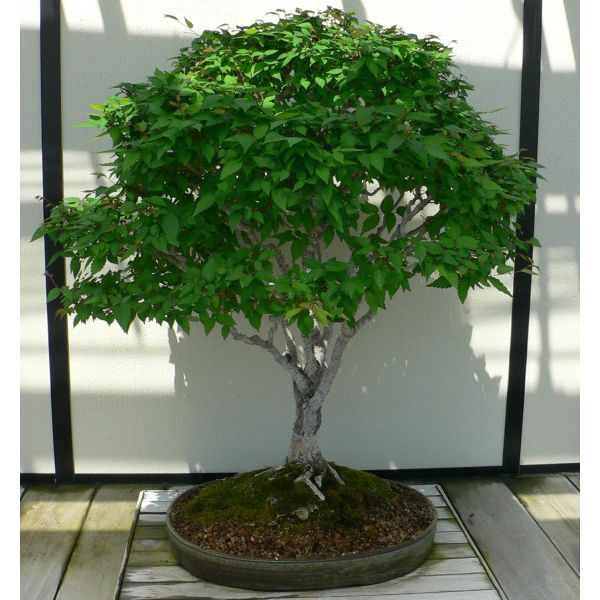Zelkova Serrata Seeds (Japanese Zelkova Seeds, Grey-Bark Elm Seeds)
Zelkova Serrata Seeds (Japanese Zelkova Seeds, Grey-Bark Elm Seeds)
Some even call them one of the best deciduous trees for bonsai. In Winter they produce small, greenish flowers that have a slight perfume.

Delivery
All orders shipped with UPS Express.
Always free shipping for orders over US $250.
All orders are shipped with a UPS tracking number.
Returns
Items returned within 14 days of their original shipment date in same as new condition will be eligible for a full refund or store credit.
Refunds will be charged back to the original form of payment used for purchase.
Customer is responsible for shipping charges when making returns and shipping/handling fees of original purchase is non-refundable.
All sale items are final purchases.
Help
Give us a shout if you have any other questions and/or concerns.
Email: contact@domain.com
Phone: +1 (23) 456 789
Availability: Out of stock
SKU
Zelkova Serrata
Zelkova serrata, Japanese Zelkova or also called the Japanese Grey-bark Elm is a tree originating from cool-climate areas of Western Asia to China and Japan. In nature, it grows 90 to 100 feet tall with a 60 to 80 foot spread. Zelkova is massive, with the trunk capable of growing to four feet or more in diameter. Zelkova is suited to almost all bonsai styles.
They are deciduous bonsai with small ovate, serrated, pointed leaves. Some even call them one of the best deciduous trees for bonsai. Although they are related to the elms, they do not encounter the same diseases and in many cases are being used as elm-substitutes. Leaves are 1.5 to 4 inches long, turning a brilliant yellow, orange, or burnt umber in the Fall. In Winter they produce small, greenish flowers that have a slight perfume.
The Grey-bark Elm is usually shaped exclusively by pinching and pruning, but wire can be used. To reduce leaf size, healthy trees can be leaf pruned in early Summer. All of the leaves are removed, leaving only the leaf stems on the branches. The tree will respond by putting out a second set of leaves, smaller than the first set.
The straight trunk and smooth bark of the Zelkova are other appealing characteristics, maturing from green to grey in colour. Be careful when wiring and handling Zelkovas, its branches are thin and fragile. Wiring should be done in the Summer. Japanese Zelkova are valued for many reasons but especially because there are many equally balanced branches.
Hardiness zones 5-8, (-26øC/-15øF,-10øC/15øF) in Winter. Although reasonably frost hardy, they do prefer shelter from the elements. Make sure the tree has good Winter protection. Frost protection can include placement in darkened outhouses and garages as when out of leaf Zelkovas do not require light. During Summer in Southern part of USA, do not expose the tree to direct sun during the heat of the day.
These plants need deep, fertile, well-drained soil. Plenty of water in the Summer is required. Never allow compost to dry out, keep the compost evenly moist, but only water when necessary. Spray the foliage with water daily during the Summer. Balanced feed weekly through Spring and Summer. Do not feed when out of leaf.
| Label | Zelkova serrata |
|---|---|
| Common name | Japanese Zelkova |
| Genus | Zelkova |
| Species | Zelkova serrata |
| Germination | For faster germination, soak the seeds in slightly hot water for 24-48 hours, followed by 6 weeks of cold stratification before sowing in sterile gardening soil. Keep damp soil, not soaking wet. Keep pot in warm situation, 68-75 øF. Germination usually occurs in one to two months. It can be more depending on their degree of unbroken dormancy, don't give up. |
| Scarification / Stratification | This will break their dormancy. It creates a cold and moist environment for the seeds. Mixed in seeds with slightly moistened vermiculite or peat, only damp in a ziplock bag. Close zip bag shut and store it in the salad crisper compartment of your refrigerator. If any seeds begin to sprout during the cold stratification, simply remove the seed and plant. |
| Price View | Price Range |

